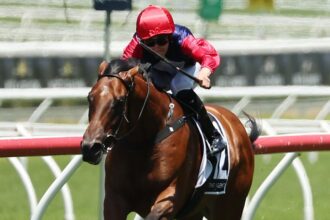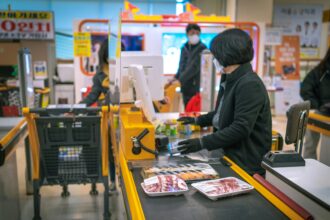Symbolism Meets Strategy in St Peter’s Square
When Prime Minister Anthony Albanese steps into St Peter’s Square for the inaugural Mass of Pope Leo XIV, the event will resonate far beyond religious symbolism. The Vatican becomes the world’s center of diplomatic gravity, and Albanese’s attendance represents more than pious ceremony—it’s strategic political positioning.
This singular appearance offers Albanese an opportunity to advance both domestic and international agendas. For a nation like Australia, participating in such a historic, symbolic event broadcasts a message of inclusion, diplomacy, and influence in global power arenas.
A Public Reconnection With Faith
Albanese has recently invoked his Catholic heritage with new emphasis, speaking of “reconnecting” with it. He described the election of the US-born Pope Leo XIV as “momentous” for both believers and non-believers—a message that resonates across Australia’s religiously diverse electorate.
Roughly one in four Australians identify as Catholic, a significant demographic in the national mosaic. Attending the Vatican’s grandest ceremony allows Albanese to visibly recognize this faith-based community, a group that at times feels politically sidelined.
This move requires no political capital but yields considerable symbolic return. It reinforces Labor’s broader theme of inclusive governance and respect for Australia’s multicultural fabric, projecting Albanese as a unifying figure.
Where Faith and Foreign Policy Intersect
Amidst the sacred rituals of St Peter’s Square, a congregation of global dignitaries will gather, making this a diplomatic convergence zone unlike any other. The guest list remains fluid, but already includes some of the world’s most powerful leaders, affirming the strategic value of Albanese’s presence.
Chief among his foreign policy objectives will be reviving stalled trade talks with the European Union. These negotiations collapsed in 2023, but the Vatican’s informal setting offers a rare chance to reset the conversation directly with EU power players.
The Australian prime minister is expected to engage European Commission President Ursula von der Leyen and European Council President António Costa. These leaders hold critical keys to unlocking future trade frameworks that could impact Australia’s economic trajectory.
A Cast of Global Power Brokers
Other key figures in attendance include Prince Edward, standing in for King Charles III, and Canadian Prime Minister Mark Carney. Their presence opens secondary diplomatic lanes for reinforcing alliances and shared values across the Commonwealth.
Ukrainian President Volodymyr Zelensky is anticipated as well, fresh off renewed appeals to the papacy for peace in Ukraine’s ongoing conflict with Russia. Albanese’s interaction with Zelensky, even informally, would underscore Australia’s continued solidarity with Ukraine’s sovereignty.
Speculation circulated about Donald Trump’s return to Rome following his appearance at Pope Francis’ funeral in April. But that spotlight has shifted. The US will instead be represented by Vice President JD Vance and Secretary of State Marco Rubio.
Informal Moments, Lasting Influence
For Albanese, a brief corridor interaction with Vance could prove invaluable. Such a meeting would allow for a personal tone ahead of an upcoming official visit to Washington, without the orchestrated media spectacle of a full-scale White House reception.
Critics may call it opportunism—leveraging a sacred moment for political ends—but history proves such mingling is nothing new. World leaders have long viewed papal events as forums where moral legitimacy and political strategy coexist.
The Vatican’s Quiet Diplomatic Clout
Pope Francis’ 2013 inauguration drew 31 heads of state and 132 official delegations. In 2005, Pope John Paul II’s funeral gathered over 80 sitting heads of state, a political congregation rivaled only by the United Nations General Assembly.
Why such magnetism? The Vatican offers something rare: a moral endorsement for temporal agendas. This blend of spiritual credibility and sovereign diplomacy grants the Holy See an unmatched influence on global issues, from peace negotiations to humanitarian crises.
John Paul II played a catalytic role in Poland’s democratic transition, exemplifying how Vatican support can shape history. The pope is not just a religious leader; he’s a geopolitical player with deep soft power.

The Vatican’s diplomatic service is the oldest continuous foreign office in the world, maintaining relations with 184 states. It’s one of the few that recognizes both Palestine and Taiwan, offering unique channels of dialogue in complex international disputes.
Since 1929, the pope has held full sovereign authority over Vatican City under the Lateran Treaty. This enables the Holy See to function as a state actor, receiving ambassadors, signing treaties, and addressing multilateral assemblies with spiritual gravitas.
Pope Francis broke new ground in 2024 by addressing a G7 summit, where he spoke on artificial intelligence and met with global heads of state. Among them were leaders from the United States, India, France, Turkey, Brazil, Canada, and Ukraine, highlighting the pope’s continuing role as a bridge-builder.
Papal diplomacy is often subtle yet profound. When popes travel abroad, their visits carry the trappings of statehood—yet are officially framed as “apostolic journeys”. Conversely, visiting dignitaries are hosted not in palaces but in the pope’s personal apartments, where the tone is spiritual, not ceremonial.
This dual identity—spiritual shepherd and political sovereign—allows the papacy to transcend partisan divides. It enables conversations that blend theological perspective with diplomatic pragmatism, often yielding long-term influence.
For Australia, this moment is not just about optics—it’s about impact. Albanese’s presence reaffirms a commitment to multilateralism, particularly at a time when Canberra’s growing defense posture in the Indo-Pacific needs diplomatic balancing.
Rome offers a gentler platform—where diplomacy is wrapped in ritual, and policy dialogues happen under frescoed ceilings rather than fluorescent lights. This change of scenery can humanize negotiations and forge relationships based on shared values, not just interests.
It’s also an opportunity for Australia to project itself more warmly to the Global South, especially in Catholic-majority regions such as Latin America and the Philippines. Both are emerging priorities for Australian educational exports and green-hydrogen diplomacy.
The visual grandeur of Sunday’s Mass will dominate the headlines—the Fisherman’s Ring, the pallium, the chants of 100,000 pilgrims echoing through Bernini’s colonnade. But behind the ornate pageantry lies a quieter theatre of influence, where policy ideas and geopolitical intentions are exchanged in hushed tones and firm handshakes.
Albanese seems to understand this alchemy well. His attendance at the Vatican’s most powerful spiritual ceremony is not simply symbolic—it’s pragmatic statecraft dressed in ecclesiastical robes.
In this space where religion and politics have intersected for centuries, Australia is playing a long game. Showing up is more than just good manners. It’s an assertion of presence, influence, and readiness to shape the world stage—not from the sidelines, but from the sanctified center.






